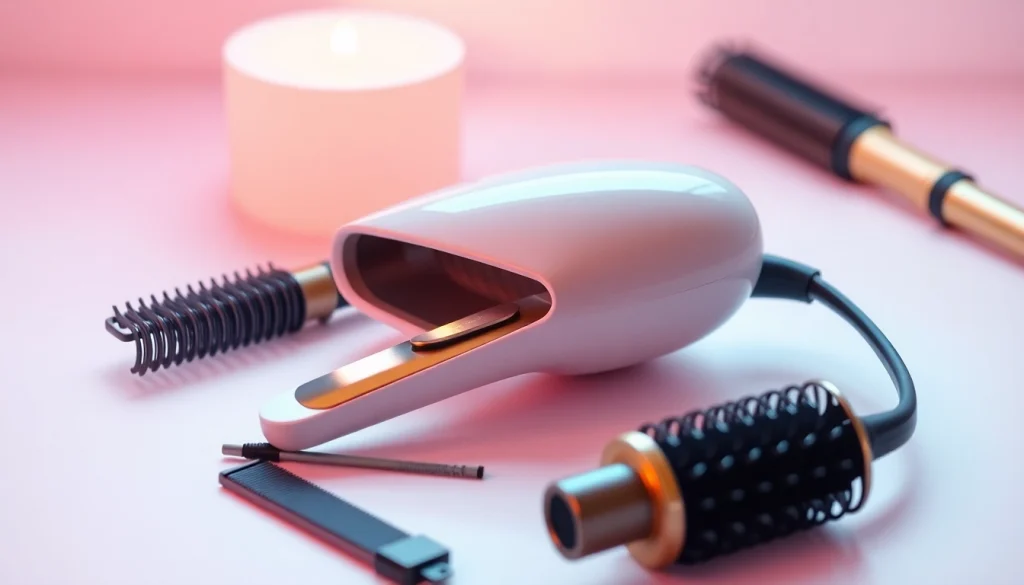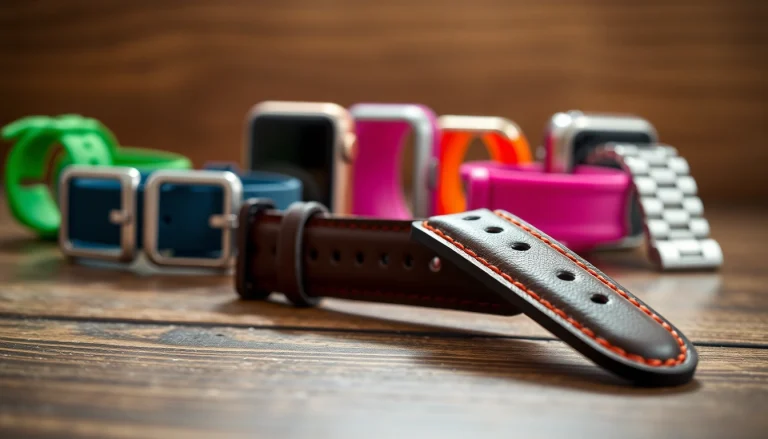
Understanding Heat Tools for Hair
In the realm of hairstyling, heat tools have become indispensable for anyone looking to achieve a polished, professional look. These tools, which include hair straighteners, curling irons, and blow dryers, are designed to manipulate hair texture and style through the application of heat. However, with the myriad of options available, it’s essential to understand what heat tools are and how they can benefit your hair care routine. This knowledge will not only enhance your styling skills but also ensure that you are using these tools effectively and safely. Heat tools for hair serve as a gateway to creativity, allowing you to explore endless styling possibilities.
What are Heat Tools?
Heat tools for hair refer to electronic devices designed to style hair using heat. Common examples include curling irons, flat irons, and hair dryers. They work on the principle of applying controlled heat to the hair, thereby altering its structure temporarily. When heat is applied, it breaks the hydrogen bonds in the hair that define its natural shape – giving a straightener the ability to smooth curls, or allowing a curling iron to form bouncy waves. Understanding how these tools operate can help you choose the right tool for your specific styling needs.
Benefits of Using Heat Tools for Hair
The use of heat tools comes with a range of benefits that can significantly enhance your hairstyling experience:
- Versatility: Heat tools allow for a diverse range of styles, from sleek straight hair to voluminous curls, offering endless possibilities for self-expression.
- Time Efficiency: High temperatures enable quicker styling, making heat tools a favorite for those with busy schedules.
- Durability of Styles: Styles created with heat tools tend to last longer compared to those achieved through other methods, ensuring your hair looks fresh throughout the day.
- Accessibility: With advancements in technology, today’s heat tools often come equipped with features such as temperature control, ready-to-use indicators, and automatic shut-off for safety.
Common Mistakes to Avoid
While heat tools can transform your hair, improper usage can lead to damage. Here are some common pitfalls to avoid:
- Skipping Heat Protectants: Many users neglect to apply heat protectant products, which are essential for minimizing damage from high temperatures.
- Using the Wrong Temperature: Each hair type responds differently to heat; using excessive heat on fine hair can lead to breakage, while too low a temperature might not yield effective results on coarse hair.
- Overlapping Sections: When styling, overlapping previously styled sections can lead to uneven results and potential damage, as hair can become overheated in specific areas.
- Lack of Maintenance: Failing to clean and store your heat tools properly can diminish their effectiveness and lifespan.
Types of Heat Tools for Hair
Different Types of Hair Stylers
Choosing the right heat tool is essential for achieving the desired look. Here’s a closer look at various types of hair stylers:
- Flat Irons: These are designed for straightening hair, but can also create soft waves by adjusting the technique. They come in a variety of plate materials, including ceramic, titanium, and tourmaline, each offering different heat distribution and styling results.
- Curling Irons: Available in various barrel sizes, curling irons can produce tight curls or loose waves, allowing for creative versatility. Look for options with adjustable temperature settings for customized styling.
- Hair Dryers: Essential for drying hair and enhancing volume, modern hair dryers often come with multiple heat and speed settings, diffusers for curly hair, and ionic technology to reduce frizz.
- Hot Rollers: These tools combine heat with rollers to offer a hands-free method to achieve soft curls and waves without excessive manual styling effort.
Comparing Straighteners and Curling Irons
While both straighteners and curling irons use heat to transform hair, they serve different primary purposes:
- Straighteners: Perfect for achieving a sleek, polished look, straighteners can also form curls with the right technique, making them versatile for both styles.
- Curling Irons: Specifically designed for curling, they allow for a variety of curl types but are less effective for straightening unless using unconventional methods.
Ultimately, the choice between the two depends on your styling preferences; both can be valuable additions to your hair tool arsenal.
Heat Tools for Hair Maintenance
To maximize the benefits of your heat tools, proper maintenance is key. Regular upkeep not only extends the lifespan of your tools but also ensures optimal performance:
- Cleansing: Build-up from hair products or dust can affect the efficiency of heat tools. Clean your tools after each use by wiping the plates and barrels with a damp cloth to remove residue.
- Calibration: Ensure that your tools continue to operate at the right temperature by exploring models with temperature settings that calibrate accurately over time.
- Cord Care: Avoid pulling cord length or placing it under heavy items. Regularly check for any fraying or damage to maintain safety.
Tips for Safe Heat Styling
Choosing the Right Temperature
Selecting the right temperature is crucial to avoid hair damage:
- Fine Hair: Should ideally use lower temperatures (around 300°F to 350°F) to prevent burns and breakage.
- Medium Hair: Can handle temperatures between 350°F to 375°F, accommodating a range of styles.
- Thick or Coarse Hair: Usually requires higher settings (up to 450°F), but should still be approached with caution to avoid damage.
Always start with a lower setting and gradually increase until you find the best temperature that works for your hair type and desired style.
Using Heat Protectants Effectively
Heat protectants are vital for safeguarding your hair against damage. Here are some tips for effective use:
- Application: Make sure to apply heat protectant on damp hair before using heat tools for optimal protection.
- Even Distribution: Use a wide-tooth comb to ensure even product distribution throughout your hair.
- Choosing the Right Product: Look for protectants that suit your hair type (aerosols for fine hair, creams for thicker textures) for maximum effectiveness.
Advanced Techniques for Styling
Creative Ways to Use Heat Tools for Unique Styles
Once you’ve mastered the basics, exploring advanced styling techniques can further elevate your hairstyling game:
- Creating Beach Waves: Utilize a flat iron by twisting the hair around the plates and releasing it for an effortlessly tousled look.
- Volume Boosting with Curling Irons: Wrap larger sections of hair loosely around the barrel, leave for a shorter duration, and let them cool in your hand for enhanced volume and soft waves.
- Half-Up Styles: Use straighteners or curlers exclusively on the upper sections of hair to create a stylish half-up, half-down look that’s chic yet simple.
Layering Techniques for Volume and Depth
Layering can add significant volume and depth to your hairstyle:
- Incorporate Layers When Cutting: Requesting layered cuts can create a foundation for added movement when using heat tools.
- Alternate Directions: When curling, alternate the direction of your curls to avoid a uniform look and achieve more natural volume.
Styling Diverse Hair Types
Every hair type has its own unique characteristics and needs:
- Curls and Coils: Those with textured hair should embrace a ceramic or tourmaline flat iron for even heat that styles best without excessive heat.
- Straight Hair: Straight hair can benefit from curling techniques, so don’t shy away from experimenting with curler barrels or straightener curls.
Maintenance and Care for Heat Tools
Cleaning Your Heat Tools for Longevity
Regular cleaning is paramount in prolonging the life of your heat tools. Follow these steps:
- Cool Down: Always allow your heat tools to cool down completely before cleaning to prevent burns.
- Use Mild Detergents: A solution of warm water and mild soap can be effective for cleaning, especially for ceramic and tourmaline plates.
- Soft Cloths: Use non-abrasive cloths to avoid scratching surfaces while wiping down.
Storage Tips to Protect Your Tools
Proper storage can prevent unnecessary damage to heat tools:
- Use Heat-Resistant Mats: Keeping your tools on heat-resistant surfaces when cooling or storing can prevent damage to countertops.
- Padded Cases or Bags: Investing in padded storage options keeps tools safe during transportation and prevents cords from tangling or fraying.
When to Replace Your Heat Tools for Hair
Knowing when to replace your heat tools can save you from unsafe styling and ineffective results:
- Frequent Breakdowns: If your tool continuously malfunctions or fails to heat properly, it’s time for a replacement.
- Visible Damage: Damaged cords, cracked plates, or malfunctioning controls are signs that it’s time for a new purchase.
- Outdated Technology: As hair care technology advances, tools with newer features may provide better results; if yours is several years old, consider upgrading.





